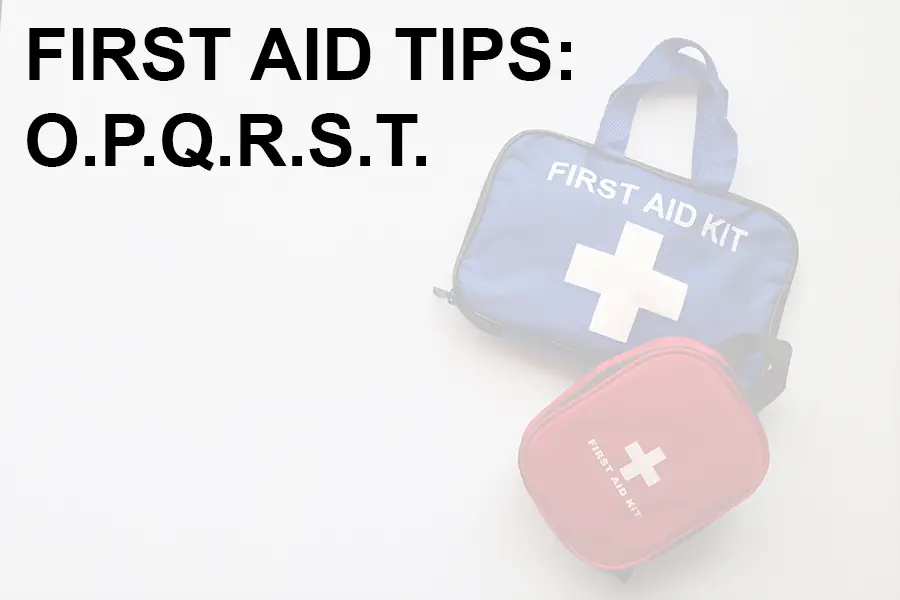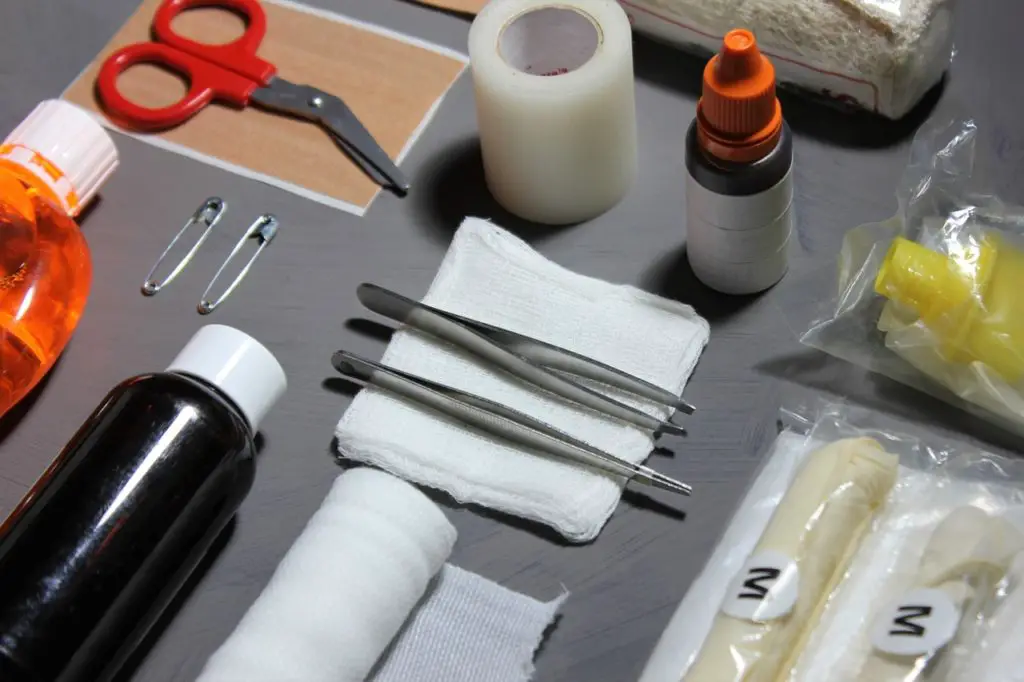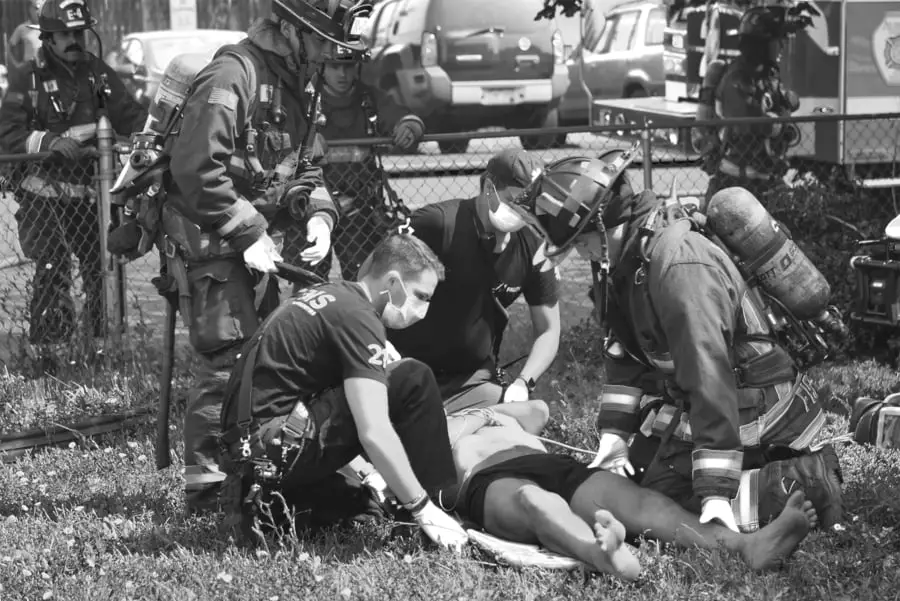One of the most critical components of first aid is the patient assessment. As a first aider, we want to figure out what is going on with the patient in order to treat them effectively. However, asking relevant questions can be challenging when this isn’t something you do every day.
If you are not a professional rescuer, your patient contacts are probably few and far between. OPQRST is an acronym that I have been taught during my EMT-Basic, Advanced EMT, and Paramedic schools to ensure that I ask the right questions during my patient assessments. OPQRST is only used to assess pain, and not as an overall assessment like the DRSABCD. When you finish reading this, you’ll understand what OPQRST means and how to use it during your patient assessments.
What does OPQRST stand for in first aid?
O- Onset
P- Provocation
Q-Quality
R-Radiates
S- Severity
T-Time
Examples of Use with Medical and Trauma Assessments
It doesn’t matter if you are treating someone with a medical or traumatic complaint; the OPQRST questions will be the same. To help conceptualize this, we will look at two examples:
Medical Patient:
You are hiking when you come across a 56-year-old male complaining of chest pain.
Trauma Patient:
You are hiking when you come across a 26-year-old female complaining of right ankle pain.
O- Onset
Ask: “What were you doing when the pain started?” A good follow-up question would be, “Did the pain start suddenly, or has it gotten progressively worse?”
Medical Patient:
The patient tells you that he was hiking up a hill when his chest pain started. He ignored the pain, but it got progressively worse as he continued to hike, so he had to sit on a bench.
Trauma Patient:
The patient tells you that she was hiking when she tripped and fell over a rock, causing her to roll her right ankle.
P- Provocation
Ask: “Does anything make your pain better or worse?”
Medical Patient:
The patient tells you that his pain worsens with physical exertion and is made better with rest.
Trauma Patient:
The patient tells you that her pain worsens with movement or when she tries to put weight on her foot, and nothing makes it better.
Q-Quality
Ask: “What word would you use to describe your pain?” You can give them examples like sharp, dull, achy, stabbing, throbbing, etc. Before giving examples, see if the person can describe the pain independently because we want this question to be as open-ended as possible.
Medical Patient:
The patient tells you that his pain feels like dull pressure.
Trauma Patient:
The patient tells you that the pain feels sharp and her ankle is throbbing.
R-Radiates
Ask: “Does the pain move anywhere, or does it stay in one place?”
Medical Patient:
The patient tells you the pain moves from his chest to his left shoulder and jaw.
Trauma Patient:
The patient tells you the pain stays in her ankle.
S- Severity
Ask: “On a scale of 1 to 10, how bad is your pain? “1” is no pain, and “10” is the worst pain of your life.” Everyone experiences pain differently. One person’s “10” could be another person’s “2”. A good qualifying question to ask is what was their “10” before this incident.
Medical Patient:
The patient tells you that his pain is an “8” while hiking and a “3” when he rests.
Trauma Patient:
The patient tells you that her pain is a “10” when she moves and a “9” when she is at rest.
T-Time
Ask: “What time did the pain start?” “About how long have you been feeling this way?” Some conditions, like a stroke, require a specific time of when the symptoms started because it could limit the kind of treatments available. At the very least, try to get a generalized length of time the patient has been experiencing the symptoms.
Medical Patient:
The patient tells you that his pain started around 8:30 A.M. when he started his hike.
Trauma Patient:
The patient tells you that she tripped about 45 minutes ago.
Create a Summary
After asking my OPQRST questions, I always summarize what the patient has told me for two reasons. One, I want to make sure that I heard everything correctly. Two, it shows active listening skills, making it easier to connect with the patient I am treating.
You could also use the summary when giving a handoff report to other medical personnel that arrives on the scene or to the receiving facility staff.
Medical Patient:
“Just to make sure I understand, you have chest pain that started around 8:30 A.M. while hiking up a hill. The pain feels like a dull pressure and becomes an 8 out of 10 while you are hiking, but it is a 3 out of 10 when you are resting, and the pain moves from your chest to your left arm and jaw. Is that all correct?”
Trauma Patient:
“Just to make sure I understand, you were hiking when you tripped and fell about 45 minutes ago. After you fell, you developed 9 out of 10 right ankle pain that becomes a 10 out of 10 with movement. The pain stays in your ankle and feels sharp and throbbing. Is all that correct?”
Final thoughts
Patient assessments are the most critical component of first aid. If we aren’t treating patients daily, finding the right questions to ask may become challenging; however, remembering acronyms like OPQRST can help make asking relevant questions simple.




